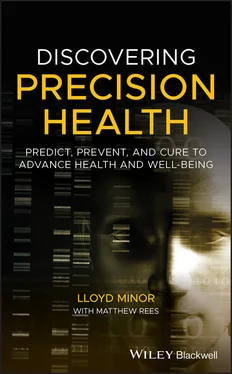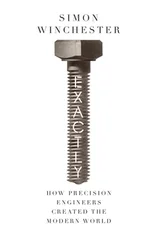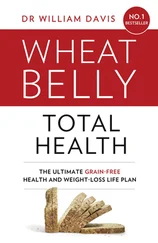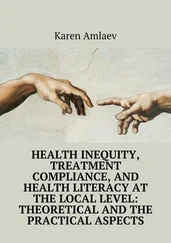1 ...8 9 10 12 13 14 ...17 While the design of EHRs is a topic of considerable criticism from physicians, much of the data entry is driven by regulatory considerations. The authors of a 2018 article published in the Annals of Internal Medicine described their experience of helping to launch EHR software (Epic Systems) in health systems throughout the world. (The same software is used widely in the United States.)
We noted a significantly different interpretation of the EHR abroad: Physicians were more likely to report satisfaction with its use and cite it as a tool that improved efficiency. We also found that clinical documentation differs from that in the United States. In other countries, it tends to be far briefer, containing only essential clinical information; it omits much of the compliance and reimbursement documentation that commonly bloats the American clinical note. In fact, across this same EHR, clinical notes in the United States are nearly 4 times longer on average than those in other countries.
The authors also noted that since enactment of the 2009 HITECH Act, clinical notes in the United States have doubled in length, thus supporting their conclusion that simplifying regulations “would benefit the health care system and patients alike” [21].
It’s clear that transforming EHRs into sophisticated clinical tools depends on reforming the technology that underlies them and the regulations that govern them. But it’s also clear that radical changes will be required at many different levels, and physicians in particular are going to need to reexamine their role in shaping the future. In 2018, Stanford Medicine published a white paper that contained several recommendations ( see box on next page ) [22]. A long‐form article in the April 2019 issue of Fortune also provides a detailed overview [23].
WHAT HANDICAPS THE U.S. HEALTH CARE SYSTEM
Fax machines and electronic health records are far from the biggest issues facing U.S. health care, but their prominence in the health care system is a painful reminder of the system’s many shortcomings. Many thoughtful and often provocative books have been written documenting those shortcomings, such as The Innovators Prescription: A Disruptive Solution for Health Care , by Clayton Christensen and Jerome Grossman; The American Health Care Paradox: Why Spending More Is Getting Us Less , by Elizabeth Bradley and Harvey V. Fineberg; More Than Medicine: The Broken Promise of American Health , by Robert M. Kaplan; and An American Sickness: How Healthcare Became Big Business and How You Can Take It Back , by Elisabeth Rosenthal. My intent here is to briefly highlight a few of the fundamental problems that handicap the system, since they underscore the need for the kinds of new approaches represented by Precision Health.
In the United States, the term health care , as it’s commonly thought of, is a misnomer. It’s really sick care —people tend not to use health care unless they are responding to an injury, illness, or disease diagnosis—and there are few financial incentives in the system for providers to focus on prevention.
Every person with a given diagnosis tends to receive the same treatment, regardless of his or her age, sex, and other medical conditions, even though all those variables dramatically influence the responses to treatment.
When an individual enters the medical system, there is often very little coordination among all the different health care providers. Their communication can be haphazard, and they may not have access to the same pieces of patient information, which can lead to inadequate or incorrect treatments.
Invest in adequate EHR training when onboarding clinicians and bring them up to speed when incremental changes are made.
Enlist clinicians to help prioritize EHR development tasks and to design clinical workflows that take advantage of EHR capabilities (e.g., the Sprint team model).Tailor the size and makeup of clinician development teams, taking into account the clinical resources available.
Deliver EHR development projects soon after clinicians ask for them.
Establish an EHR governance process that gives the clinical organization nimbleness in responding to health emergencies and crisis scenarios.
Make analytics data available to clinicians—presented in a way that is intuitive at the point of care.
Shift nonessential EHR data entry to ancillary staff. In the near term, consider increasing the number of medical assistants to act as “digital scribes” (though this option is expensive). In the long term, seek automated solutions to eliminate manual EHR documentation.
Reevaluate your organization’s interpretation of privacy rules.
Create opportunities for patients to digitally maintain their records (providing family history, medical history, medications, health monitoring data, etc.).
Junk the fax machine (if you still have one) and embrace electronic communications.
Start accepting electronic payments, if you don’t already.
EHRs reflect the current fee‐for‐service payment paradigm. Commit to value‐based care and provide adequate support to clinicians under this model, including greater reimbursement for preventive care services and the use of digital health to engage patients.
Create common standards for billing and quality reporting across payers.
Streamline preauthorization procedures.
Make claims data more accessible to physicians to enable a longitudinal view of their patients.
Affirm commitment to value‐based care and move away from requiring literal documentation of patient‐doctor interactions.
Create more flexibility around who needs to enter data into the EHR, as many tasks do not require the expertise of a highly trained clinician.
Clarify information‐blocking rules to encourage open APIs and eliminate perverse incentives to hoard information.
Clarify definitions of interoperability—in collaboration with other stakeholder groups—and adopt common technical standards to support them.
Develop systems and product updates in partnership with your end users—less than half of U.S. physicians believe EHR developers are responsive to their feedback.
Embrace open APIs and nurture a community of developers to enable an app‐based ecosystem that puts the patient in control.
Develop and market an ecosystem of third‐party apps that put patients in control of their own health data.
Focus on eliminating the manual entry of data into the EHR by recruiting AI, natural language processing, and other emerging technologies.
Develop AI to increase the intelligence of clinical information systems, enabling them toSynthesize relevant information in the EHR before each patient encounter and present the physician with a pithy summary.Combine patient complaint information with EHR databases and the latest medical literature to support medical decision‐making.Deliver current and contextualized information to each member of a patient care team (i.e., enable intelligent “care traffic control”).
Detached and Disconnected from Patients
Much of the health care system is defined by one‐way transactions: patients are diagnosed and receive treatment, but there’s often little communication with the patients and their families about their preferences, their family history, or their financial circumstances. This can lead to ill‐advised decisions about what treatments to provide.
Читать дальше












